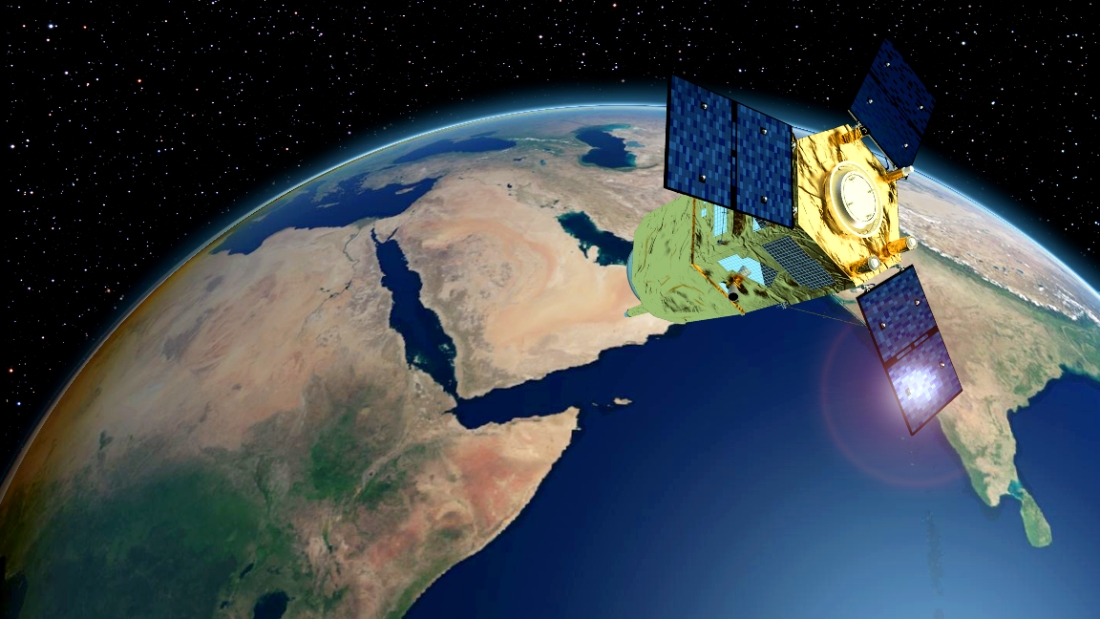A look back at the first UAE reconnaissance satellite, the last of which was launched on Arianespace's VS24 mission.
French trio winner
The contract for the sale of two optical reconnaissance satellites to the United Arab Emirates was signed in July 2013, during the visit to Abu Dhabi of French Defense Minister Jean-Yves Le Drian.
Estimated at €800 million, the contract was won through an alliance between Airbus Defence and Space (Astrium at the time), as prime contractor, and Thales Alenia Space (formerly Alcatel), as payload supplier.
The joint bid was preferred to that of the American manufacturer Lockheed Martin.
It also included the installation of a ground control station and the training of some 20 engineers in the Emirates on behalf of the United Arab Emirates Armed Forces (UAEAF).
The launch contract (on Vega or Soyuz, in 2018 and 2019) was signed in March 2015 between Airbus and Arianespace.
Satellite technical specifications
The two Falcon Eye satellites were assembled on AstroBus platforms.
These had been used for the two French Earth observation satellites Pleiades 1A and 1B, built by Astrium for Cnes and launched on Soyuz from French Guiana in December 2011 and December 2012.
Each satellite was equipped with Thales Alenia Space's HiRI (High-Resolution Imager) imaging system, which offers a ground resolution of 70 cm over a swath of 20 km.
Order for a third Falcon Eye?
The first Falcon Eye, which weighed 1,197 kg at liftoff, was lost on July 11, 2019, when the Vega launcher failed in flight during Arianespace's VV15 mission.
At the customer's request, the second launch was transferred to a Soyuz STA Fregat M launcher in French Guiana.
It was finally launched on Arianespace's VS24 mission, on December 2, the day the United Arab Emirates federation was created in 1971.
The flight ended with a successful launch into sun-synchronous orbit, with an apogee of 611 km and an inclination of 97.9°.
It is now waiting to see if the United Arab Emirates wt is now waiting to see if the United Arab Emirates will order a third satellite to replace the one lost last year.
Its combined insurance policy (taken out notably with the German reinsurer Munich Re) reached in any case a visibly unprecedented amount for the launch of an optical satellite: probably 369 million euros, for the launcher and its passenger.
New military export contract imminent?
Steps are also being taken to sell new dual observation satellites or secure telecommunications relays abroad.
For the former, Airbus is currently promoting platforms derived from the Pleiades Neo satellites and more compact satellites, similar and complementary to those that will equip the Cnes Earth observation satellite constellation CO3D (3D Optical Constellation), which is scheduled for deployment in 2023.
In the meantime, it is rumored that the next French order for a spy satellite could come from Egypt, after five years of negotiations.
Cairo, an ally of the United Arab Emirates, is targeting the same theater of operations, Libya, where its adversaries are Qatar and Turkey.
The Red Sea is also an area of common interest.
Thales Alenia Space (this time prime contractor) and Airbus
Defence and Space had already provided Egypt with its first geostationary telecommunications satellite, Tiba 1.
The satellite was launched on November 27, 2019, using an Ariane 5 during the VA250 mission.

